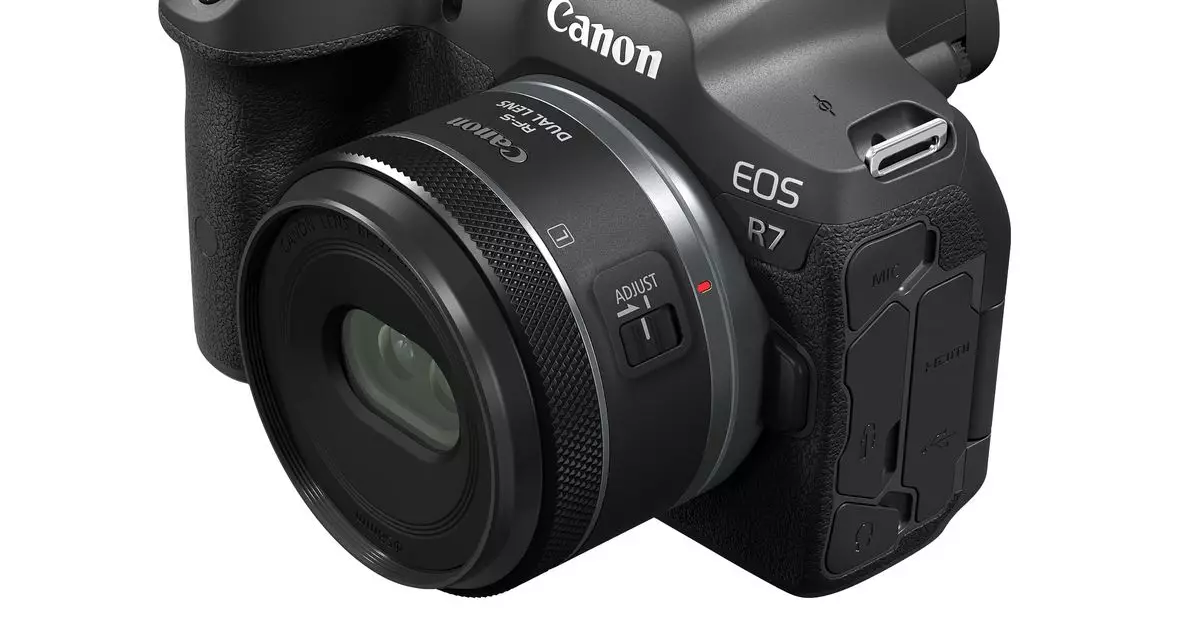In the rapidly evolving world of photography and videography, Canon has made a commendable entry with its newly announced RF-S7.8mm F4 STM Dual lens. This innovation marks a significant stride into the realm of 3D content creation, appealing to a diverse range of creators aiming to tap into the burgeoning market of virtual reality (VR) and augmented reality (AR). Promised as a more accessible option for enthusiasts seeking to produce spatial videos and immersive experiences, this lens underscores Canon’s commitment to adapting to the latest technological trends while maintaining quality and affordability.
The RF-S7.8mm lens boasts a compact design similar in size to traditional 2D camera lenses, allowing for easy handling and versatility in various shooting environments. Featuring stereoscopic elements squeezed into its framework, the lens is designed specifically for compatibility with the Canon EOS R7 camera, making it a fitting accessory as content creation shifts towards immersive formats. With an aperture range of f/4.0 to f/16 and autofocus capabilities, it caters to both novice and experienced videographers alike.
It becomes evident that Canon aims to democratize 3D content creation with this new offering. Priced at an estimated retail value of $449.99, the RF-S7.8mm lens stands as an attractive alternative to Canon’s existing, pricier dual-fisheye lenses. While the RF5.2mm F2.8 L Dual and RF-S3.9mm F3.5 STM Dual lenses command prices of $1,999 and $1,099 respectively, the RF-S7.8mm provides an economically viable option for budding creators without sacrificing essential features.
Understanding Limitations and Comparisons
One notable aspect of the RF-S7.8mm lens is its limited field of view. While its pricier counterparts achieve nearly 180-degree coverage akin to human visual perception, the new lens captures merely 63 degrees. This restriction may pose challenges for certain users aiming for expansive scenes or effects. However, the lens has been strategically designed to deliver optimal 3D effects when focusing on subjects within a closer range of 6 to 20 inches. As such, spatial dynamics and the distance of subjects become critical considerations for creators utilizing this lens.
Moreover, the lens features a simplified optical path with its front elements positioned just 11.8mm apart, setting it apart from Canon’s higher-end solutions that exhibit a wider gap of 60mm. Though this design decision compromises a broader perspective, it optimizes the lens for specific applications, particularly in controlled environments ranging from interviews to product showcases.
Another vital aspect of the RF-S7.8mm lens is the post-production requirement to view the captured images or videos in VR or AR formats. Canon offers dedicated software tools, including the EOS VR plugin for Adobe Premiere Pro and its proprietary EOS VR Utility, essential for converting raw footage into accessible 3D content. Potential users should note that these tools may require a subscription, introducing an additional cost to the overall production process. Though the need for processing might deter some, it emphasizes the product’s position within a professional toolkit, especially for those serious about content creation in the evolving landscape of immersive media.
The Bigger Picture: Canon’s Role in Future Content Creation
Canon’s introduction of the RF-S7.8mm F4 STM Dual lens is a noteworthy moment for creators eager to engage with the growing VR and AR sectors. By lowering the barrier of entry with a more affordable price point, Canon not only reinforces its reputation as a significant player in the camera industry but also aids in fostering creativity among a broader audience. While limitations exist regarding field of view and the necessity for post-production alignment, the innovation presents an exciting opportunity for storytellers to experiment with and refine their approach to 3D content. As Canon rounds out its offerings in this space, it remains to be seen how this lens will influence the future of immersive visual storytelling, paving the way for a new generation of content creators.

